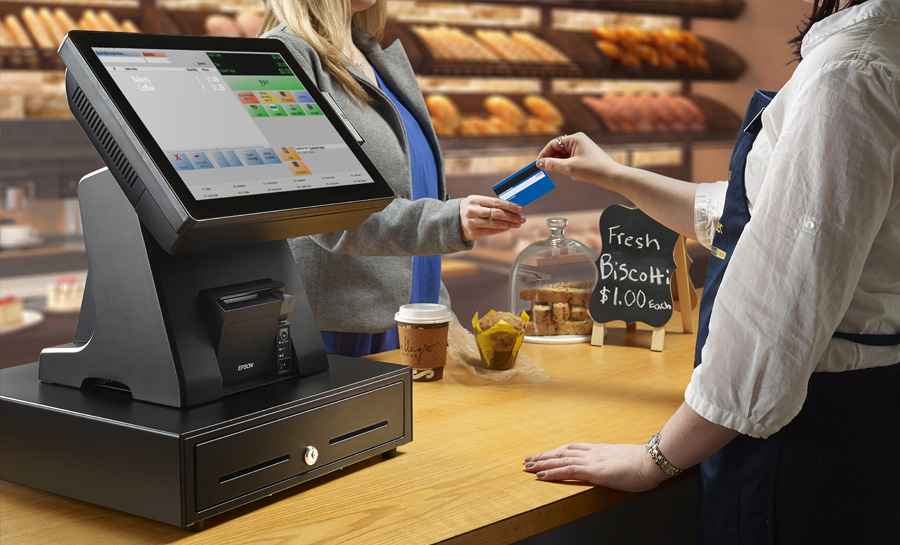Exactly How POS System Works: A Comprehensive Overview for Service Owners

Understanding the Parts of a POS System

Exactly How Sales Deals Are Processed
When a customer chooses to buy, the sales purchase starts a series of systematic steps within the POS system. The cashier inputs the products being purchased, which are scanned via a barcode reader or by hand gotten in. This activity obtains item information, consisting of prices and suitable taxes, from the system's database.Next, the customer is presented with the overall quantity due. The POS system after that refines the repayment, whether through cash, credit score card, or mobile settlement techniques (Restaurant POS Software). For digital settlements, the POS securely interacts with repayment processors to authorize and verify the transaction.Once the settlement is validated, the system produces a receipt, which can be printed or sent digitally. This receipt acts as receipt for the consumer. The transaction information is recorded in the system, making certain accurate sales documents and financial monitoring for the company.
Supply Management and Tracking

Effective inventory administration and monitoring are crucial components of a POS system, as they assure that companies maintain suitable supply levels and reduce inconsistencies. A durable POS system permits real-time supply updates, reflecting returns and sales instantaneously. This allows local business owner to check stock levels accurately, making sure that prominent things are conveniently offered while avoiding overstocking of much less prominent products.Additionally, progressed POS systems provide features such as automated stock notifies and reorder pointers, improving the purchase procedure. Barcoding and RFID technology enhance accuracy in tracking inventory activity, minimizing human error. Comprehensive coverage devices provide insights right into supply turn over prices, aiding services make notified choices regarding buying and product offerings. Eventually, reliable stock administration with a POS system not only boosts functional performance yet likewise boosts consumer satisfaction by ensuring product availability.
Evaluating Consumer Data and Insights
Customer information analysis offers as a powerful tool for organizations utilizing a POS system (Restaurant POS Software). By checking out and accumulating transaction data, businesses can uncover beneficial understandings concerning customer actions and choices. This evaluation enables them to recognize buying trends, peak buying times, and prominent products, thereby informing supply decisions and marketing strategies.Additionally, companies can click here segment their customer base, allowing for personalized advertising and marketing initiatives that satisfy particular demographics or purchasing routines. Understanding consumer loyalty patterns additionally assists in developing targeted rewards and promotions programs.The information gleaned from a POS system can additionally expose insights into client feedback, allowing businesses to make educated choices pertaining to product offerings and service enhancements. Ultimately, leveraging customer data properly can boost the total buying experience, foster consumer fulfillment, and drive earnings growth
Benefits of Implementing a POS System

Frequently Asked Concerns
What Kinds Of Services Can Take Advantage Of a POS System?
Various businesses benefit from a POS system, including retail shops, restaurants, beauty parlors, and shopping systems. These systems improve purchases, stock administration, and client data, enhancing operational effectiveness and improving client experience across diverse industries.
Just how much Does a POS System Generally Cost?
The check here cost of a POS system typically varies from a few hundred to a number of thousand bucks, relying on attributes, equipment, and software program. Companies must consider recurring charges for upkeep, support, and transaction handling when budgeting.
Can I Incorporate a POS System With Existing Software Application?
Incorporating a POS system with existing software program is commonly possible. Several systems provide APIs or integrated compatibility functions, permitting companies to simplify operations and enhance functionality by attaching different software applications efficiently.
What Training Is Required for Team to Use a POS System?
Educating for staff to make use of a POS system usually includes understanding software capabilities, processing transactions, managing inventory, and handling consumer interactions. Practical demos and hands-on session boost proficiency and confidence being used the system efficiently.
What Takes place if the Net Drops While Using a POS System?
If the internet goes down during POS system usage, transactions may be interrupted. Lots of systems supply offline capacities, enabling fundamental procedures to continue, but full functionality, including real-time supply updates, will certainly be limited. A Point of Sale (POS) system is composed of a number of crucial components that work with each other to facilitate deals and handle organization operations. Efficient more info stock monitoring and monitoring are important components of a POS system, as they guarantee that businesses maintain excellent supply degrees and reduce discrepancies. Customer information evaluation offers as an effective device for companies utilizing a POS system. Comprehending client loyalty patterns likewise helps in creating targeted incentives and promos programs.The information amassed from a POS system can also disclose understandings right into client feedback, making it possible for businesses to make enlightened choices pertaining to item offerings and service improvements. Applying a POS system provides various benefits that can significantly improve service operations.